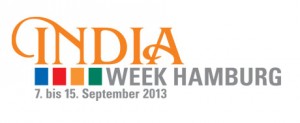New publication from the Institute for Technology and Innovation Management, Hamburg University of Technology (TUHH)
Title: Frugal Innovations for the ‘Unserved’ Customer: An Assessment of India’s Attractiveness as a Lead Market for Cost-effective Products
Authored by: Rajnish Tiwari and Cornelius Herstatt
Publication date: March 2012
Download: http://www.global-innovation.net/publications/PDF/Working_Paper_69.pdf
—–
Abstract
This study builds on the authors‘ previous work, which had questioned the validity of certain assumptions of the lead market theory in the face of changing ground realities in a globalized world. Sustained economic growth and proven technological capabilities in some “emerging economies” like China and India call for a reassessment of the appropriateness of the “conventional wisdom” that had held true until recently. While our previous study had built a theoretical background the lead market model by introducing new elements, and doing away with certain others, with the help of two in-depth case studies, the purpose of the present study is to specifically assess India’s potential as a lead market for cost-effective frugal innovations.
The study crystallizes the inherent characteristics of frugal innovations, their development process and market success in the domestic and overseas markets by analyzing four successful product innovations from selected industries in India. The factors identified thus are then incorporated in the theoretic model to derive propositions about India’s lead market potential. Whereas affordability and economies of scale have traditionally constituted the primary concern for frugal innovations, an increasing shift towards “value proposition” is identified. Intensifying competition and growing customer aspirations are changing the nature of frugal innovations. The hitherto unserved customer demands attractive designs and modern technologies to come out of his shell of “non-consumption”. Our research confirms that frugal innovations can benefit end-consumers and firms, simultaneously. Better-designed products also have positive impact on the lead market potential, creating a virtuous cycle. The study also discovered that the increasing need for sophistication coupled with continued cost pressures is shifting the product development processes into the domain of “open global innovation”, which also helps reduce the negative country-of-origin effects faced by developing countries. The research would have implications for location decisions in setting up global innovation/R&D activities.
Keywords: Lead Markets; Frugal Innovations; India; Bottom of the Pyramid; Global Innovation; Open Innovation; Emerging Economies.
 Following some requests by members of German-Indian Round Table (GIRT) Hamburg we are making available speech manuscripts of the Senate Reception to the India Week Hamburg 2013:
Following some requests by members of German-Indian Round Table (GIRT) Hamburg we are making available speech manuscripts of the Senate Reception to the India Week Hamburg 2013: